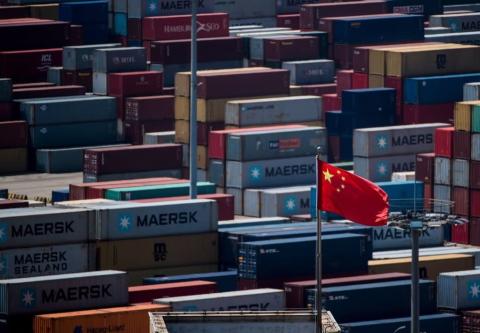
China’s economy unexpectedly slowed in July, with factory and retail activity squeezed by Beijing’s zero-Covid policy and a property crisis, while the central bank surprised markets by cutting key lending rates to revive demand.
July’s industrial output grew 3.8% from a year earlier, slightly down from 3.9% in June, data from the National Bureau of Statistics (NBS) showed. That compared with a 4.6% increase expected by analysts in a Reuters poll.
Retail sales, which only turned positive in June, rose 2.7% from a year ago, greatly missing analysts’ forecast for 5% growth and below the 3.1% growth seen in June.
The world’s second-biggest economy narrowly escaped a contraction in the June quarter, hobbled by the lockdown of the commercial hub of Shanghai, a deepening downturn in the property market and persistently soft consumer spending.
However, risks to growth abound as many Chinese cities, including manufacturing hubs and popular tourist spots, imposed lockdown measures in July after fresh outbreaks of the more transmissible Omicron variant were found.
“The risk of stagflation in the world economy is rising, and the foundation for domestic economic recovery is not yet solid,” the NBS warned in a statement.
The property sector, which has been further rocked by a mortgage boycott that weighed on buyers’ sentiment, deteriorated in July. Property investment tumbled 12.3% in July, the fastest rate this year, while the drop in new sales deepened to 28.9%.
Chinese policymakers are trying balance shoring up a fragile recovery and eradicating emerging Covid clusters, with the economy expected to miss its official growth target this year – set at about 5.5% – for the first time since 2015.
“All economic data disappointed in July, with the exception being exports. Loan demand from the real economy remained weak, suggesting cautious outlook for the months ahead,” said Nie Wen, a Shanghai-based economist at Hwabao Trust, adding that Covid outbreaks and the heatwaves in July weighed on activity.
“Now it is looking increasingly challenging to even achieve the 5-5.5% growth in the second half.”
The employment situation remained fragile. The nationwide survey-based jobless rate eased slightly to 5.4% in July from 5.5% in June, although youth unemployment stayed stubbornly high, reaching a record 19.9% in July.
In order to prop up growth, the central bank on Monday unexpectedly lowered interest rates on key lending facilities for the second time this year. New yuan loans tumbled by more than expected in July as companies and consumers stayed wary of taking on debt, data showed on Friday.
Wang Jun, economist at Zhongyuan Bank, believe authorities will focus on implementing existing policies, rather than roll out aggressive new stimulus.
“We are now facing a typical liquidity trap problem. No matter how loose the credit supply is, companies and consumers are cautious in taking on more debt,” Wang said. “Some of them are now even paying back their debt in advance. This may herald a recession.”
Fixed asset investment, which Beijing had hoped would drive growth in the second half as exports soften, grew 5.7% in the first seven months of the year from the same period a year earlier, versus a forecast 6.2% rise and down from a 6.1% jump in January-June.










